As we all know, undertaking the Camino de Santiago requires, above all, time. Completing the entire route takes time, and we don’t always have it. Completing the Camino means starting from the Iberian Peninsula and arriving in Santiago de Compostela. The solution, fellow pilgrim, is to do the Camino de Santiago by sections at different times of the year. Even year after year, little by little, we confirm that it is possible.
- Advantages of the Camino de Santiago by Sections
- The French Way of Santiago by Sections
- The Portuguese Way of Santiago in Sections
- The Portuguese Coastal Way of Santiago in Sections
- The Northern Way of Santiago in Sections
- The Primitive Way of Santiago in Sections
- Discover the Camino de Santiago at your own pace
Advantages of the Camino de Santiago by Sections
The advantages of doing the Camino de Santiago by sections are plentiful. Many people prefer this method for the flexibility it offers, especially in terms of time.
To begin, you can complete a long route, which you might do, for example, each year. Imagine doing 62 to 124 miles (100 to 200 kilometers) per year. This is how those fortunate enough to live near a Jacobean route do it, taking on the Camino in individual stages each Sunday.
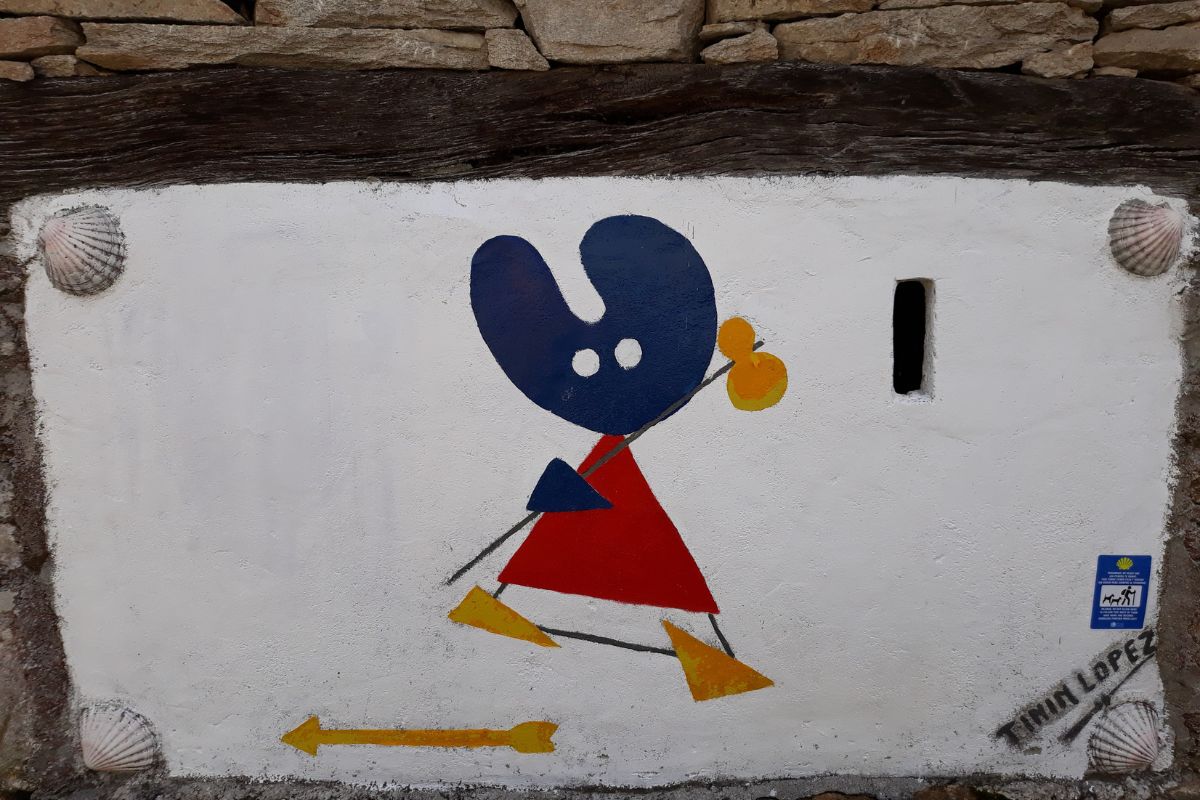
Pelegrín will accompany you on any Camino
Moreover, choosing to do the Camino de Santiago by sections can be the perfect solution if you plan to pilgrimage with friends or family. With more flexibility in time, it will be easier to agree on dates, allowing everyone to participate.
By opting to complete the Camino over several months or even years, you’ll have more time to plan each section. This also gives you the opportunity to reflect on the experiences and mistakes made in previous sections and better prepare for the next ones.
Furthermore, each section you complete will give you the chance to meet new people, further enriching your experience on the Camino de Santiago.
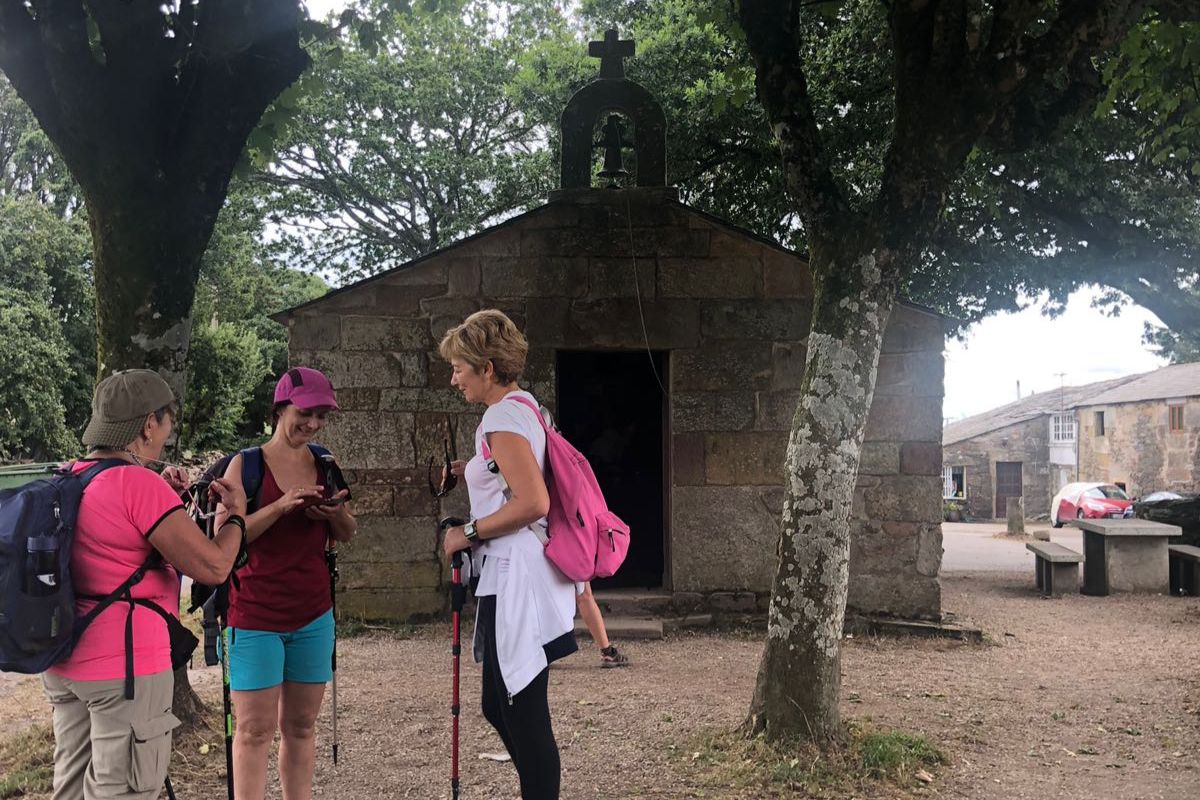
Doing the Camino de Santiago in sections allows great flexibility to organize with friends and family
Do I Need a New Credential for Each Section?
The best part is that, even when doing it by sections, you can still obtain the Compostela. This is possible because the Pilgrim’s Credential does not expire, no matter how much time passes between each section completed. The same applies to other Camino de Santiago certificates.
It’s important to remember that the stamps in your Credential must be in chronological order and the sections must be completed following the established spatial order. And if you’re one to collect many stamps, no problem, you can start a second credential and continue your Camino.
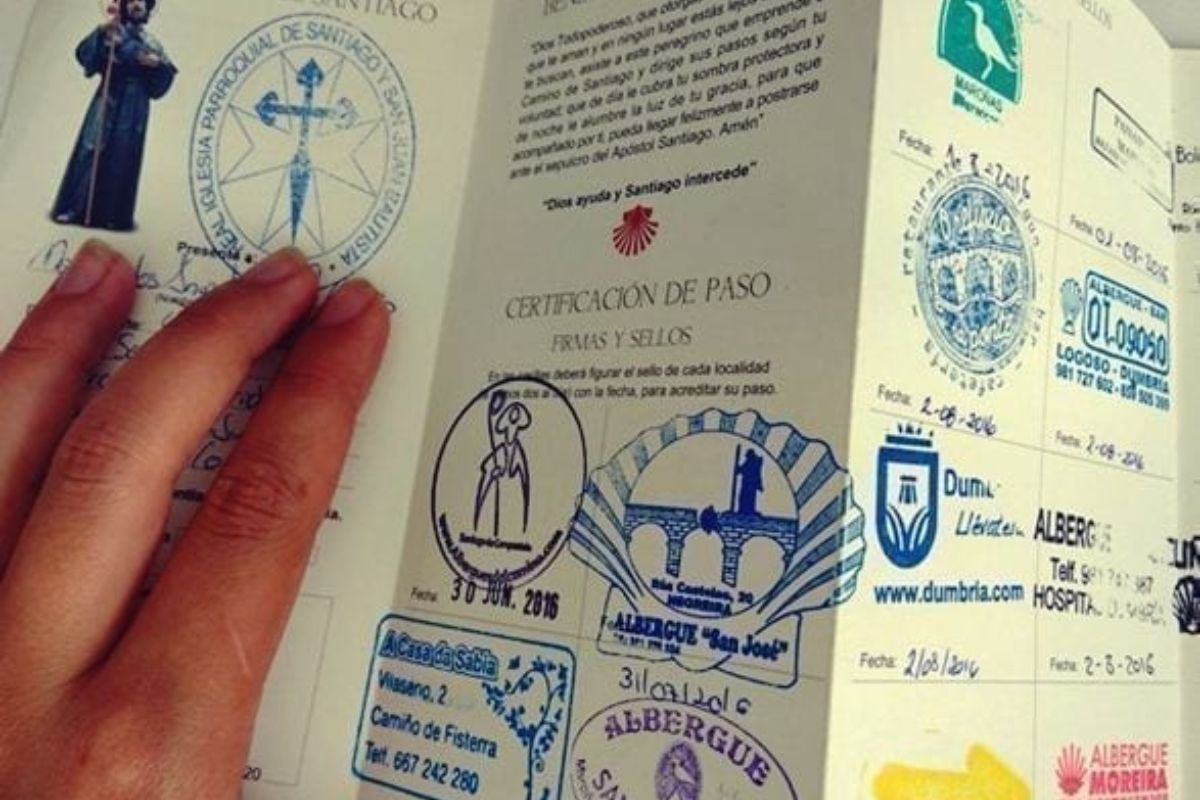
The Pilgrim’s Credential does not expire
The French Way of Santiago by Sections
Most of the pilgrims start with it. The French Way of Santiago is the quintessential route, which we can divide into the following five sections.
From Roncesvalles to Logroño
First, the section between Roncesvalles and Logroño features sublime Pyrenean landscapes leading to the beautiful lands of Navarre and La Rioja. With a total of 85 miles (136 kilometers) divided into six stages, you’ll pass through towns such as Zubiri, Pamplona, Puente la Reina, Estella, and Los Arcos. You’ll enjoy landscapes filled with vineyards, fountains that flow with wine, and spectacular heritage.
From Logroño to Burgos
Next, we continue between Logroño and Burgos, an easy journey without many inclines. You’ll discover the Montes de Oca, sublime landscapes, rich monasteries, and even dinosaur footprints. In this case, there are 75 miles (121 kilometers) divided into five stages, passing through Nájera, Santo Domingo de la Calzada, Belorado, and San Juan de Ortega.
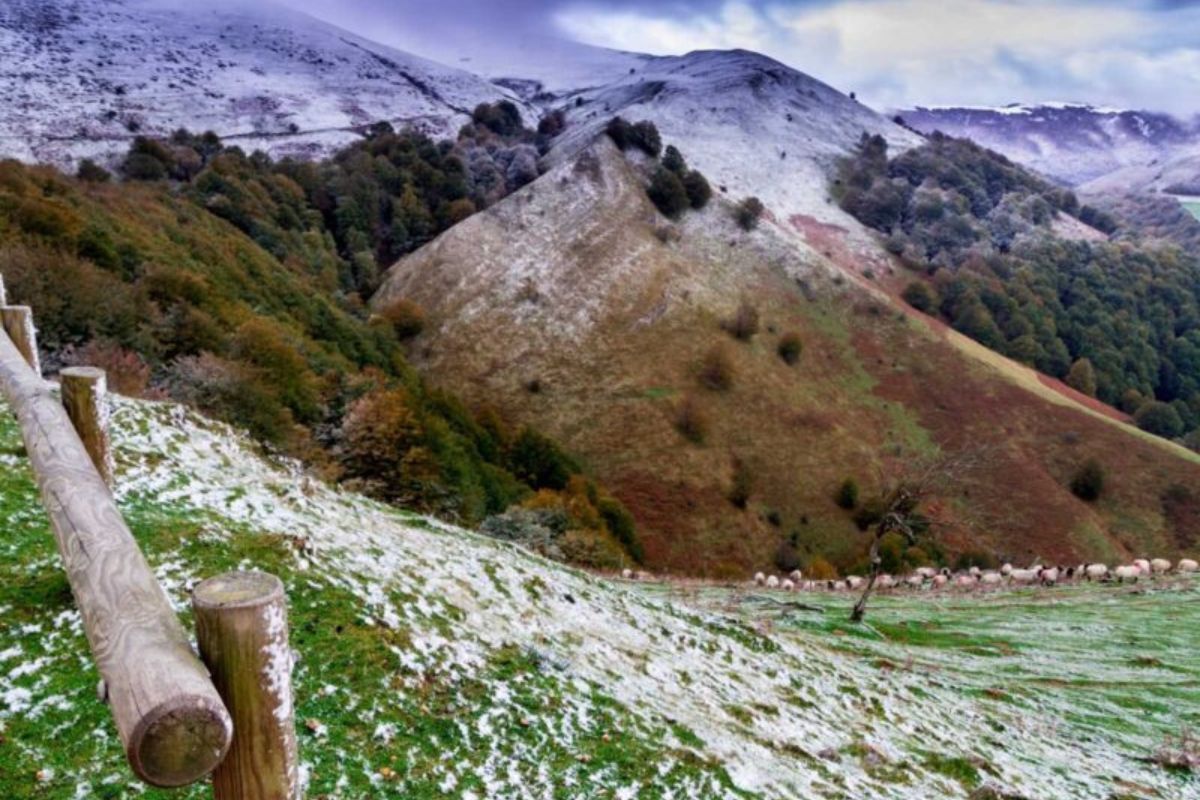
The French Way in Spain begins in the Pyrenees
From Burgos to León
We continue between Burgos and León, two cities that will surprise you with their fabulous Gothic cathedrals. This is a stretch of 109 miles (175 kilometers) divided into eight stages, with lonely plains where you can reflect and enjoy your solitude. This stretch links towns like Hornillos del Camino, Castrojeriz, Frómista, Carrión de los Condes, Sahagún, El Burgo Ranero, and Mansilla de las Mulas.
From León to O Cebreiro
Between León and O Cebreiro, the impressive Cruz de Ferro, the majestic ascent to O Cebreiro, and the triumphant entry into Galicia stand out. It is 95 miles (153 kilometers) divided into six stages that run through towns like Villadangos del Páramo, Astorga, Rabanal del Camino, Molinaseca, and Villafranca del Bierzo.
From O Cebreiro to Santiago de Compostela
Finally, between O Cebreiro and Santiago de Compostela, green Galicia awaits you, culminating at the Plaza del Obradoiro. A total of 99 miles (160 kilometers) divided into seven stages in a very special section that preserves the essence of the Jacobean experience. You will pass through Triacastela, Sarria, Portomarín, Palas de Rei, Arzúa, and O Pedrouzo.
The Portuguese Way of Santiago in Sections
The Portuguese Way of Santiago is the second most traveled route, which we can divide into the following five sections.
From Lisbon to Golegã
From Lisbon to Golegã, there are 77 miles (124 kilometers) divided into five stages, and you will pass through Alpriate, Vila Franca de Xira, Azambuja, and Santarém. You will enjoy the beautiful Lisbon and the shared Tagus River, which will accompany you constantly as you walk.
From Golegã to Coimbra
Between Golegã and Coimbra, there are 76 miles (123 kilometers) spread over five stages, visiting Tomar, Alvaiázere, Alvorge, and Cernache. You will delve into Portugal and get to know its gastronomy and rural culture. As a final highlight, the impressive historical center of Coimbra, with its two cathedrals.
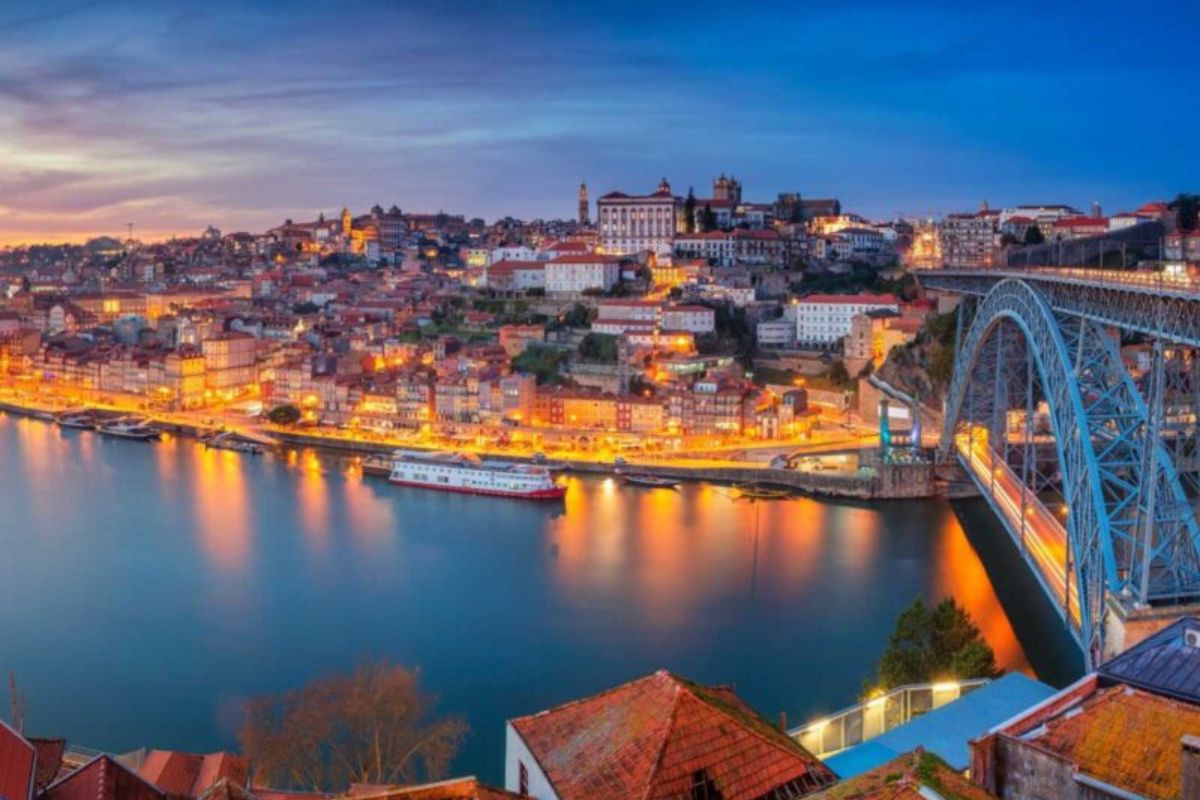
Enjoy Porto on the Portuguese Way
From Coimbra to Porto
From Coimbra to Porto, 79 miles (127 kilometers) await you in six stages that will allow you to get to know Sernadelo, Águeda, Albergaria-a-Velha, São João de Madeira, and Grijó. Once in Porto, you can indulge in tasting its famous wine along the banks of another shared river, the Douro.
From Porto to Tui
Between Porto and Tui, we prepare about 77 miles (124 kilometers) divided into five stages that form the Camino de Santiago from Portugal. Walking between the towns of Vilarinho, Barcelos, Ponte de Lima, and Rubiães, you will leave Portugal crossing another shared river, the Miño. In the last stretch in Portuguese lands, bridges will be the protagonists, like the one in Ponte de Lima or the International Bridge over the Miño River. Before crossing it, lose yourself in the fortress of Valença do Minho and enjoy the beautiful views of Tui and its historic center.
From Tui to Santiago de Compostela
Lastly, between Tui and Santiago de Compostela, there are 75 miles (120 kilometers) divided into six stages. You will pass through O Porriño, Arcade, Pontevedra, Caldas de Reis, and Padrón, where you can obtain the Pedronía, a very special Jacobean certificate. Enjoy the strong viticultural culture and the sea in the Rías Baixas, thermals in Caldas de Reis, and much Jacobean history in Padrón.
The Portuguese Coastal Way of Santiago in Sections
The Portuguese Coastal Way of Santiago is a recent alternative to the previous one that we can divide into two sections. It’s easy to enjoy by sections because is not too long and full of services.
From Porto to A Guarda
Between Porto and A Guarda, you will enjoy all the Portuguese cultural heritage as well as its enogastronomy. During 75 miles (120 kilometers) divided into five stages, you will get to know the Portuguese towns of Matosinhos, Póvoa de Varzim, Esposende, Viana do Castelo, and Vila Praia de Âncora. On this route, you will enjoy walking always parallel and in the company of the immense Atlantic Ocean.
From A Guarda to Santiago de Compostela
Finally, you will walk between A Guarda and Santiago de Compostela, with a total of 92 miles (148 kilometers) in eight stages. You will get to know the towns of Oia, Baiona, Vigo, Arcade, Pontevedra, Caldas de Reis, and Padrón. Before arriving in Santiago de Compostela, do not miss trying the Albariño wine and all the fish and seafood from the Rías Baixas.
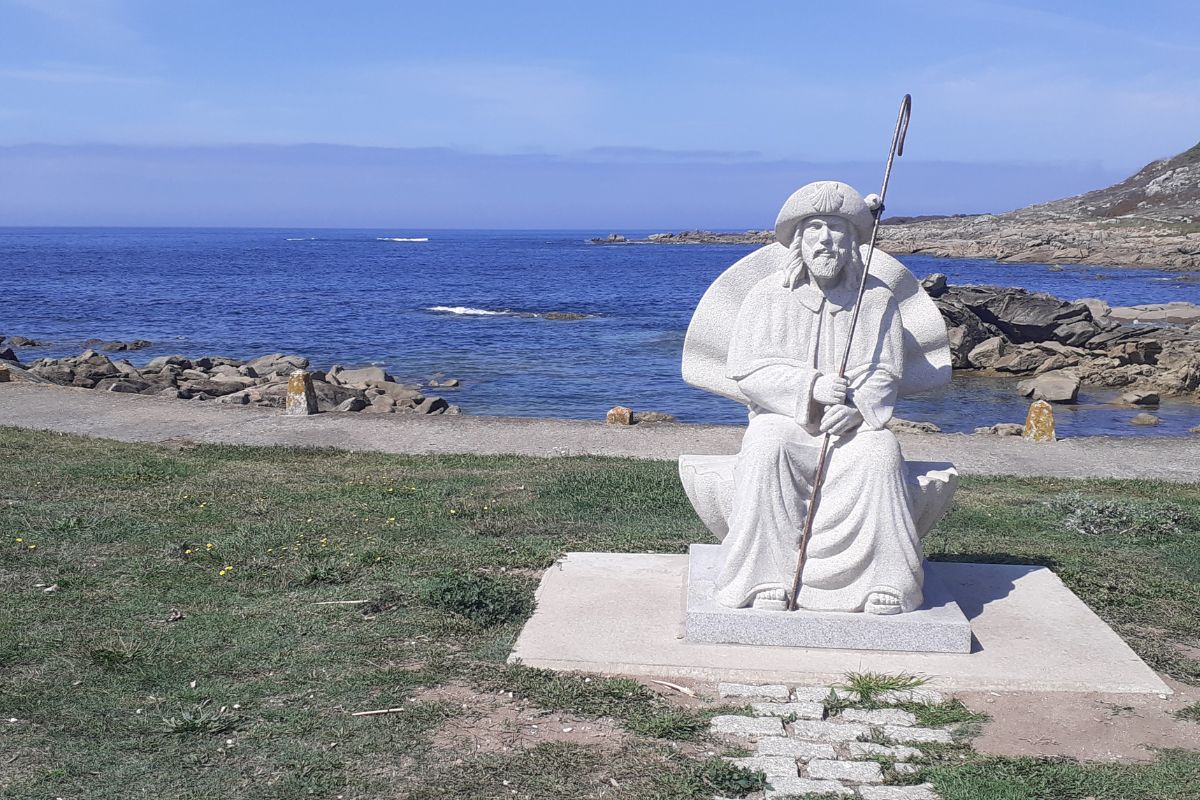
Statue of Santiago Pilgrim on the Portuguese Coastal Way
The Northern Way of Santiago in Sections
The Northern Way of Santiago is a historic route that we can divide into five sections.
From Irún to Bilbao
We start between Irún and Bilbao, with a total of 99 miles (160 kilometers) divided into seven stages passing through San Sebastián, Zarautz, Deba, Markina, Gernika, and Lezama. You can surf in Zarautz and visit modern museums like the Guggenheim in Bilbao.
From Bilbao to Santander
We continue between Bilbao and Santander, with 75 miles (120 kilometers) divided into five stages between Portugalete, Castro Urdiales, Laredo, and Noja. The sea and the best gastronomy join to let you enjoy the Basque Country and Cantabria.
From Santander to Ribadesella
Between Santander and Ribadesella, new gastronomic delights await you in Asturias and Cantabria, in a stretch of 90 miles (145 kilometers) divided into five stages. You will get to know the towns of Santillana del Mar, Comillas, Colombres, and Llanes. A good Cantabrian cocido montañés and a good Asturian fabada will be the best fuel in this section.
Ribadesella, one of the charms of the Northern Way
From Ribadesella to Ribadeo
From Ribadesella to Ribadeo, there is a total of 121 miles (195 kilometers) divided into ten stages. It runs through the towns of Colunga, Villaviciosa, Gijón, Avilés, Muros de Nalón, Soto de Luiña, Cadavedo, Luarca, and La Caridad. A mix of rural, maritime, industrial, and urban Asturias watered with a good cider.
From Ribadeo to Santiago de Compostela
The final stretch will be between Ribadeo and Santiago de Compostela, during 118 miles (190 kilometers) in ten stages. Highlights include the towns of Lourenzá, Abadín, Vilalba, Baamonde, Miraz, and Sobrado dos Monxes. The joy of being in Galicia will be the engine that takes you to the Jacobean city.
The Primitive Way of Santiago in Sections
Considered the first in the history of Jacobean routes, wellcome to the Primitive Way of Santiago. If you want to know more about it, you can walk in by sections enjoying the two parts of it.
From Oviedo to Lugo
Between Oviedo and Lugo stands out a very mountainous stretch, but with extraordinary natural beauty and a total of 135 miles (217 kilometers) divided into nine stages. You will pass through Grado, Salas, Tineo, Pola de Allande, La Mesa, Grandas de Salime, A Fonsagrada, and O Cádavo. Once in Lugo, with a great Roman past, you will have good eating assured.
From Lugo to Santiago de Compostela
Between Lugo and Santiago de Compostela, you will find a second more gentle stretch, 62 miles (100 kilometers) in five stages that connect in Melide with the French Way. We guarantee that you will love the Galician countryside, its churches and monasteries, and you will taste one of the best octopuses in Galicia.
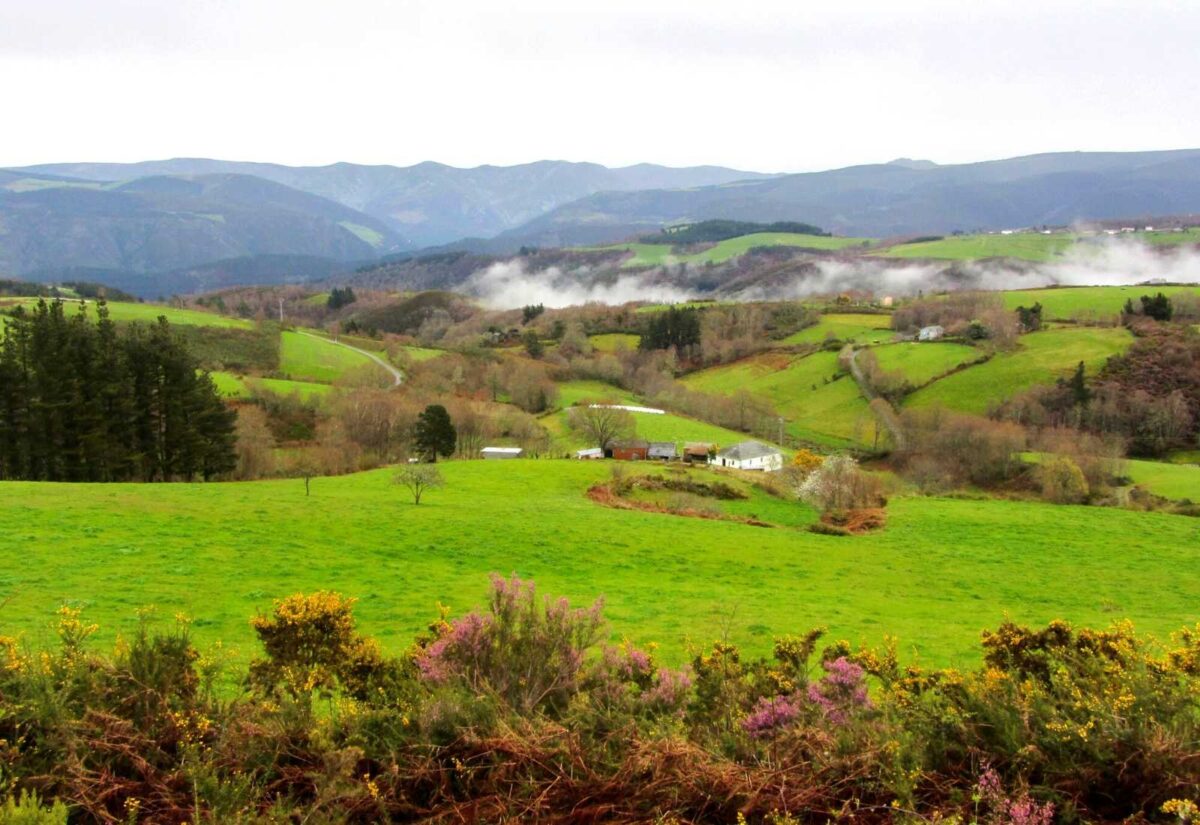
Asturian meadows on the Primitive Way
The Silver Route and the Sanabrian Way in Sections
The Silver Route is the historic way to Santiago de Compostela that comes from the south of Spain. Although it connects in Astorga with the French Way, there is an alternative known as the Sanabrian Way of Santiago, which we include here. Thus, this route can be divided into five sections.
From Sevilla to Mérida
Between Sevilla and Mérida, there are 130 miles (210 kilometers) divided into nine stages. You will pass through Guillena, Castilblanco de los Arroyos, Almadén de la Plata, Monesterio, Fuente de los Cantos, Zafra, Villafranca de los Barros, and Torremejía. Through the Andalusian and Extremaduran dehesas, you will travel to ancient Rome along the Roman road that articulates this path.
From Mérida to Salamanca
From Mérida to Salamanca, there are 168 miles (270 kilometers) presented in ten stages. You will pass through Alcuéscar, Cáceres, Alcántara reservoir, Grimaldo, Carcaboso, Aldeanueva del Camino, La Calzada de Béjar, Fuenterroble de Salvatierra, and San Pedro de los Rozados. A large amount of historical and cultural heritage hides along the paths of this section, which will leave you with a very good taste.
From Salamanca to Puebla de Sanabria
Between Salamanca and Puebla de Sanabria, there are 140 miles (225 kilometers) and eight stages. You will discover Cubo de la Tierra del Vino, Zamora, Montamarta, Granja de Moreruela, Tábara, Santa Marta de Tera, and Mombuey. You will see how the arid landscape will give way to a green and mountainous panorama.
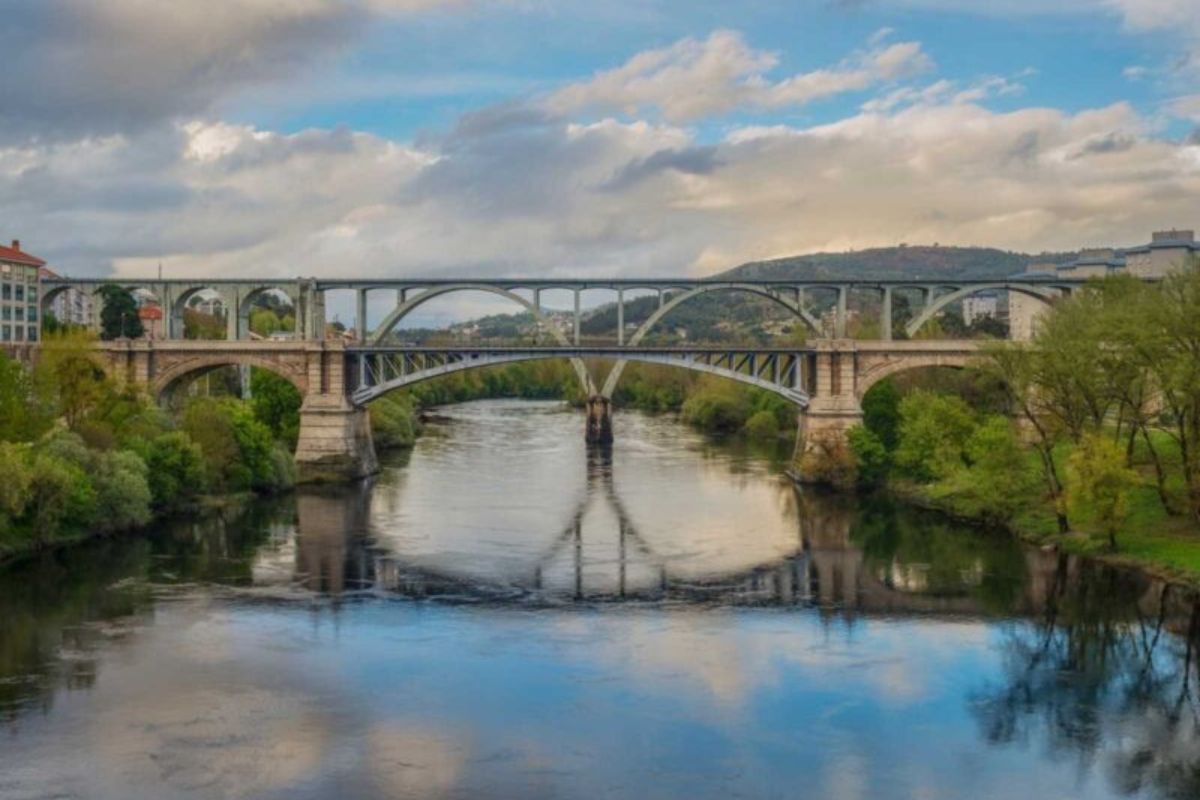
The Silver Route, through the Sanabrian Way, allows you to know Ourense
From Puebla de Sanabria to Ourense
From Puebla de Sanabria to Ourense, you connect with the Sanabrian Way. These are 87 miles (140 kilometers) that you will do in five stages passing through Lubián, A Gudiña, Laza, and Xunqueira de Ambía. With a deeply rooted traditional carnival culture, be careful with the peliqueiros of Laza during those dates.
From Ourense to Santiago de Compostela
Continue this route between Ourense and Santiago de Compostela through 68 miles (110 kilometers) in five stages. You will pass through San Cristovo de Cea, Lalín, Bandeira, and Santa Cruz de Rivadulla. The octopus and wines of Ourense, as well as the famous Lalín stew, will give you all the strength upon your arrival in Santiago de Compostela.
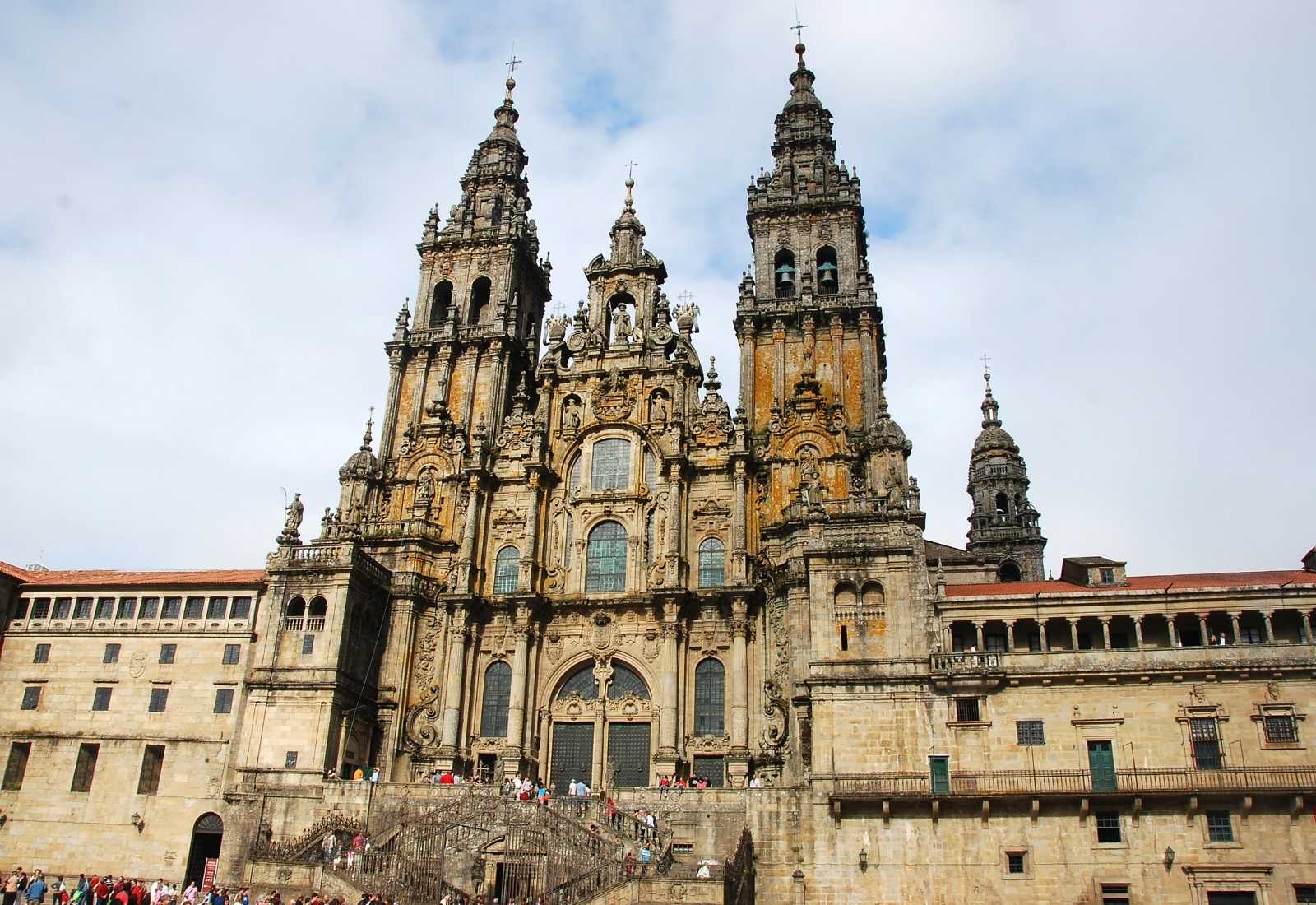
The Cathedral of Santiago de Compostela will be there waiting for you
Discover the Camino de Santiago at your own pace
As you can see, we make it very easy and with a lot of variety. Choose your dates, your Camino, and your section. You can also do these sections with your significant other, with your pet, by bike, or even in a group. This is how some of our pilgrims did it… from Holland in 19 years! We can customize a specific section for you: as we mentioned above, you just have to decide which Camino de Santiago to enjoy.

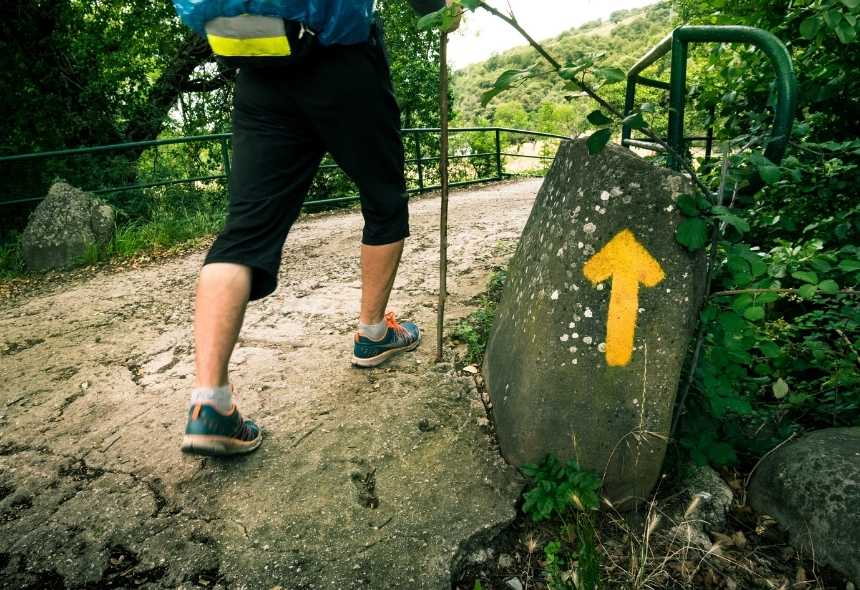




Leave A Comment